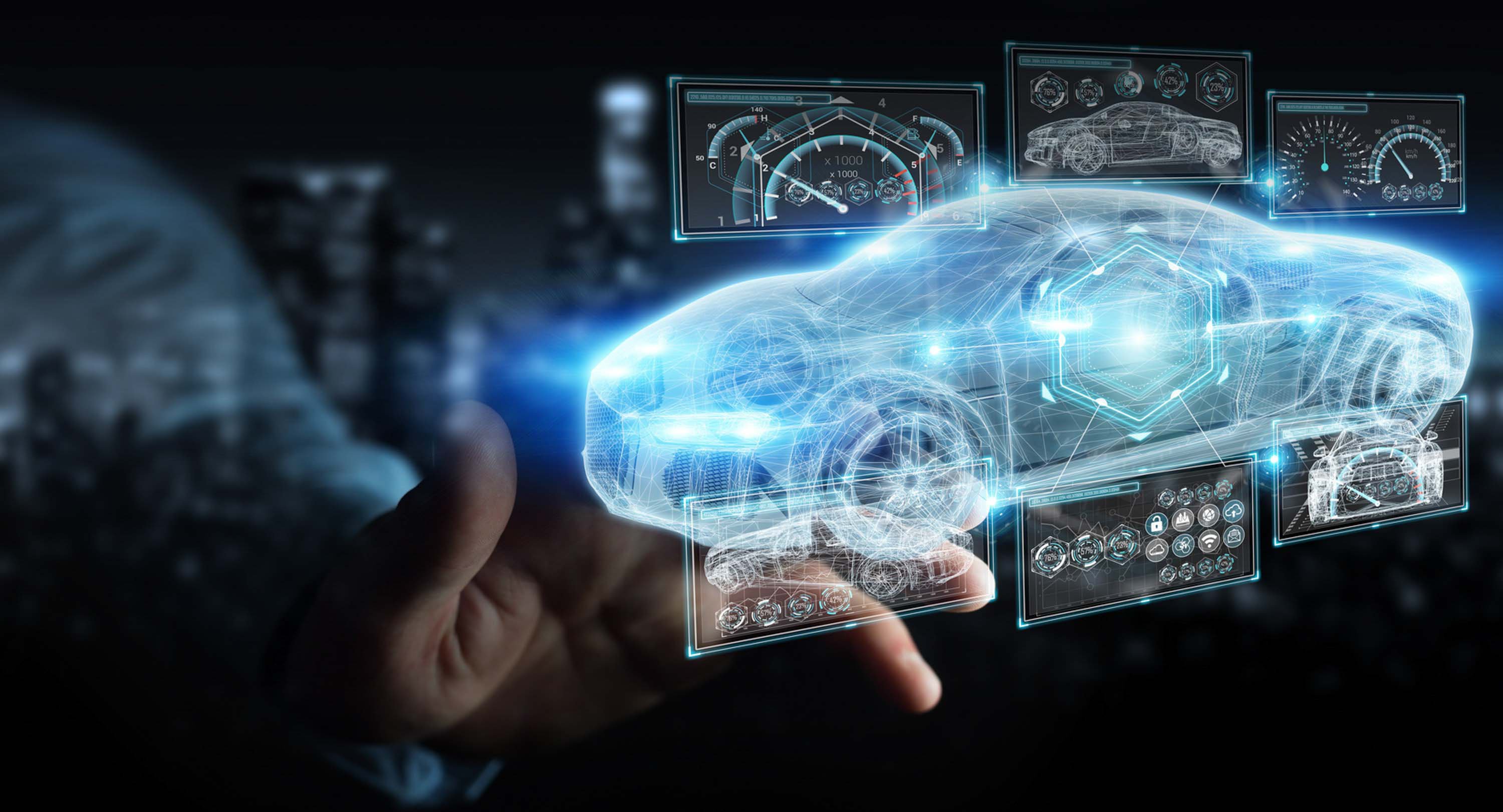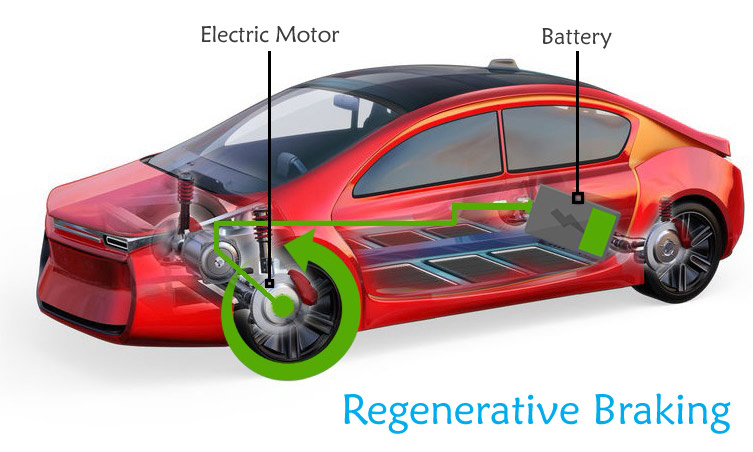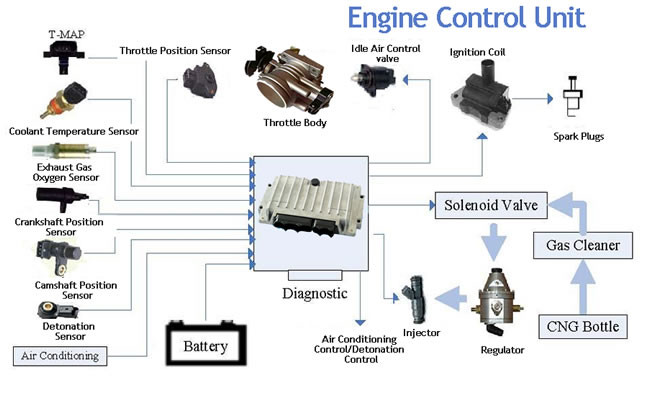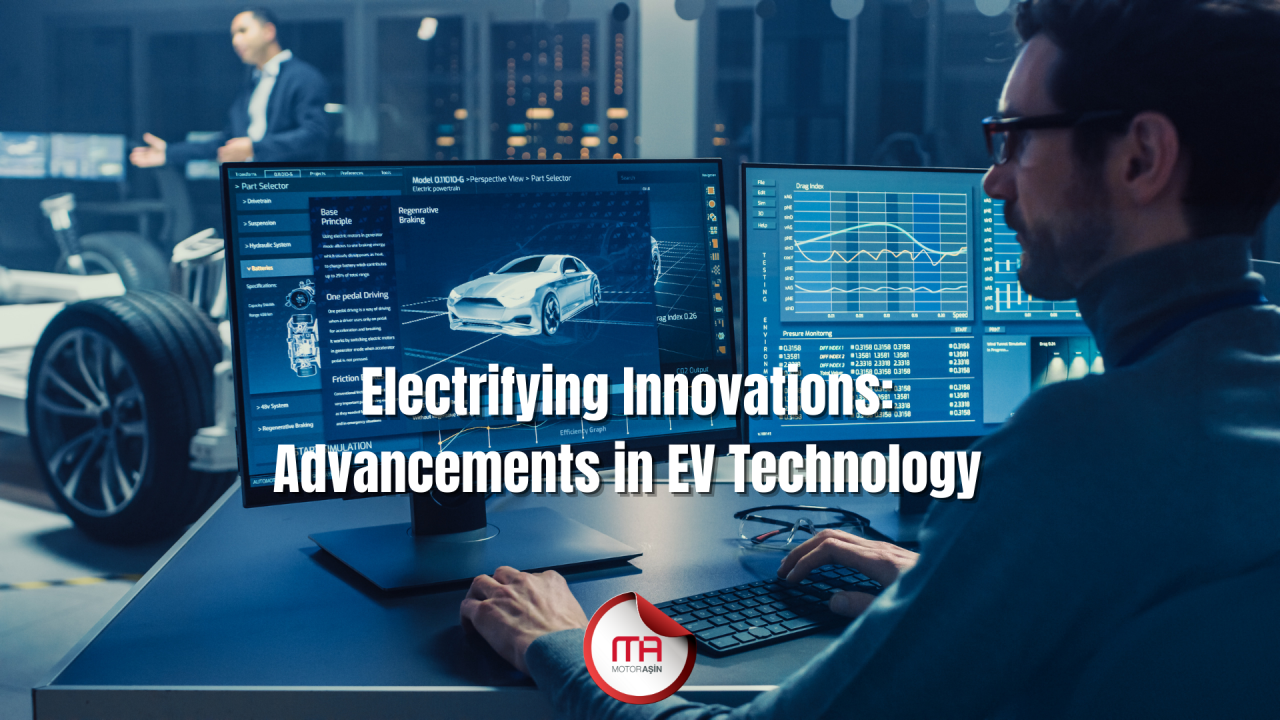The dazzle of electric vehicles (EVs) goes beyond cutting-edge design and whisper quiet rides. They’re firmly in the limelight for reimagining our approaches to transportation – but what makes them tick, really? We’re going to peel back the high-tech veneer and dive headfirst into the nuts and bolts. Splitting atoms and untangling electrons, we’ll dissect the mechanics of these electric marvels. Buckle up, because we’re about to navigate the electrifying intricacies of EV mechanics – the silent driving force of the green revolution.
Understanding the Basic Structure of EVs

When you pop open the hood of a traditional gas-powered car, you’re confronted by a bewildering array of machinery — the combustion engine, a labyrinthine network of hoses, tubes, and wires, not to mention the exhaust, cooling, and fuel systems. Massive, complex, and intimidating. Flip open the hood of an electric vehicle (EV), though, and you’re more likely to find a gigantic battery and an eerily empty void of smoothed-out plastic covering.
EV designs vary, but the fundamental setup is relatively simple. You have the battery pack, the electric motor, and the power electronics. And really, it doesn’t get much more complicated than that. The battery is, quite literally, the powerhouse of an EV, storing the energy that drives the vehicle. These are usually big lithium-ion things you’d locate under the car’s floor.
Then we’ve got the electric motor. In an EV, this takes on the role of the internal-combustion engine in a traditional car, converting the battery’s stored electrical energy into mechanical energy. It’s this mechanical energy that turns the wheels, propelling you down the highway while you happily hum along to your favorite tunes.
The power electronics essentially act as the intermediary between the motor and the battery, controlling the flow of electricity. It’s like having an accomplished conductor directing a symphony of electrical charges. They ensure that the right amount of power is delivered to the motor when you’re stepping on the accelerator and that the battery doesn’t get too much charge when you’re using the regenerative braking system.
In simplicity lies the genius of EVs – no engine oil changes, no timing belt worries, or transmission fluid. Fewer moving parts mean fewer things to go wrong. It’s so refreshingly zen: great, clean power wrung from a sizable battery, sent through a control unit, and directed into a motor to bring the vehicle smoothly and quietly to life.
Of course, there are various other components in an EV that play crucial roles, from the onboard charger that converts AC power from a wall socket to the DC power the battery uses to the cooling systems that keep things running smoothly. But this, in essence, is your EV: a battery, a motor, and a power control system. It’s motoring stripped back to its minimalist, electrically charged best.
Exploring the Powertrain of EVs

At the heart of any electric vehicle lies the powertrain – the group of components that generate power and deliver it to the wheels. Unlike conventional vehicles with engines, transmissions, and driveshafts, the EV counterpart is remarkably simple yet ingenious.
The prime mover in an EV is the electric motor, a highly efficient beast that can convert up to 90 percent of power into motion, far surpassing the figure attained by the quietest petrol dumpster. EV motors usually come in two types – the alternating current (AC) motor and the direct current (DC) motor. While DC motors are cheaper and easier to install, AC motors boast more efficiency and better power-to-weight ratios.
Now, EVs don’t just use motors plucked from your average kitchen blender. They wield permanent magnet synchronous motors (PMSM), brushless DC motors, or induction motors depending on the model. Tesla, for instance, employs an induction motor because of its regenerative braking efficiency and high-speed range, whereas other automakers might use a PMSM for greater efficiency at low speeds.
Electric motors usually get all the glory, but they would be rendered ineffective without the inverter – the unsung hero of the EV powertrain. The inverter’s role is to convert the battery’s DC power into AC for the motor, and it’s so central to performance that companies, such as Toyota, are even chasing after more efficient silicon carbide inverters.
Of course, to feed the motor its required power, there has to be an energy source – a place where the inverter ‘appears’ with its DC-AC fairy dust. That’s where the Battery Pack steps in. This is the equivalent of a fuel tank, and it’s stacked with a calculated number of cells to achieve the desired power and capacity.
Finally, we have the superhero sidekick of the powertrain – the transmission. EVs usually adopt a single-speed transmission, thanks to their wide torque curve. The transmission in an EV is smaller, simpler, and requires far less maintenance than the one in a traditional internal combustion car.
Together these components form the powertrain, the electric heart of the vehicle, offering us a glimpse into the future of transportation. It’s elegant in its simplicity, yet extremely proficient at its task – taking you from point A to B while leaving zero carbon footprints behind.
Battery Technology in EVs

The beating heart of any electric vehicle (EV) lies in its battery technology — a critical component that complements the motor and powers the car’s, well, power! The substantial progressions in battery technology over the last couple of years have significantly catapulted EVs into the mainstream making them a green and viable alternative to fossil fuel-powered traditional cars.
Currently, the lithium-ion battery pack takes center stage in the EV realm. Being efficient, light-weight, and having a high energy density, lithium-ion batteries have sealed their dominance in not just our mobile phones and laptops but now in vehicles as well. These batteries optimize the car’s overall performance and driving range, allowing for greater distances to be covered on a single charge.
The capacity of these batteries is measured in kilowatt-hours (kWh) and the higher this number, the longer your EV can run without needing a recharge. For your typical EV, batteries can range from a modest 24 kWh up to a whopping 100 kWh or more. These figures directly translate into your EV’s range — anywhere from 60 to 350 miles or more could be covered on a single full charge, demonstrating the incredible capabilities of lithium-ion power packs.
But perhaps the most impressive feature of EV battery technology lies in its progressive reduction in cost. With advancements in technology and increases in production scale, the cost of lithium-ion packs has plummeted by nearly 90% over the past decade, making EVs more accessible and affordable to a wide base of consumers.
Emerging advancements also showcase the potential of solid-state batteries, which promise to offer higher energy density and safety levels. These batteries could further swell the driving range while minimizing charging times, presenting a promising future for EVs.
Battery management systems are also equally crucial in the operational efficiency of EVs. They regulate the charging and discharging process, control the working temperature, and manage the overall performance and lifespan of the batteries.
The evolution and optimization of battery technology will indeed tread the path for EVs in the future. As researchers and companies continue to innovate, we are likely to witness even more dramatic leaps in this space — extending driving ranges, shrinking charging times, and enhancing the overall vehicular performance while reducing costs. This perpetual advancement, slowly but surely, edges us closer to an all-electric future.
Regenerative Braking System in EVs

The magic in electric vehicles (EVs) isn’t confined to the lack of a traditional engine humming under the hood or the plug-point replacing a gas station, it’s also hidden in the power recovery system- the regenerative braking.
During your average, everyday drive, you’re going to have to brake, whether it’s for a stop sign, traffic light, or because your kid dropped their juice box on the floor again. At such instances, just imagine your vehicle not only comes to a halt but uses that kinetic energy to recharge your vehicle’s batteries. Welcome to the world of regenerative braking.
In a casual, mechanical car, when you hit the brakes, brake pads create friction with brake discs, slowing down the vehicle. However, this process takes the vehicle’s kinetic energy and dissipates it, losing it into the atmosphere as heat. In stark contrast, the regenerative braking system gives the entire phrase “waste not, want not” a fair share of truth.
The regenerative braking system flips the script by turning the electric motor into a generator of sorts. When the brake is enacted, instead of wasting kinetic energy as heat due to friction, the electric motor switches its role and starts acting as a generator. The wheels, in turn, power the motor, producing electricity that is fed back into the batteries. Talk about an encore performance.
In essence, this very energy-efficient system squeezes every bit of power out of the battery, recharging it while the driver is braking, thereby extending the electric vehicle’s overall range. Plus, it reduces the wear and tear on brake pads, saving you yet another trip to the mechanic.
Here’s a food-for-thought tidbit – the regenerative braking system isn’t an all-or-nothing kind of design. It means it doesn’t replace the conventional braking system entirely. Electric Cars still have ‘normal’ brakes in parallel with regenerative ones, mainly for situations when you need to brake suddenly or when the battery is fully charged and can’t soak up any more regenerated energy. In essence, even in the world of high technology, it’s good to have a reliable old-school backup.
Like every happy-go-lucky sci-fi movie that suddenly turns into a horror after a DNA mutation, the regenerative brakes system does indeed have a learning curve attached to its functioning. The feel of the brakes is different and often takes some getting used to. But what’s a slight adjustment period in terms of breaking if we’re breaking the inertia of traditional driving to advance into efficient, greener mobility? All in all, the regenerative braking system in EVs is a giant leap forward in the world of sustainable transportation- and a fancy party trick too.
Electronic Control Unit in EVs

Stepping into the world of EV mechanics, it’s crucial that we don’t miss out on one of the essential control panels, the electronic control unit (ECU). If electric vehicles were a symphony, the ECU would be the seasoned conductor, meticulously coordinating all vehicle system performances.
So, what exactly is the ECU doing? Well, in short, it’s the vehicle’s brain, constantly processing and using data from the vehicle’s numerous sensors to optimally control systems like the electric motor, battery pack, and regenerative braking. The ECU ensures everything is working smoothly and efficiently, attaining dazzling speeds without sacrificing range or safety.
An EV’s ECU manages an array of performance aspects. It oversees power management, determining how much electricity is sent to the motors based on accelerator input. It also handles temperature supervision, ensuring that the battery, motor, and other components remain within safe operating temperatures. Given these tasks, one can see the ECU as basically the vehicle’s central nervous system, controlling just about everything in the vehicle’s operation.
Moreover, the ECU of an electric vehicle is far more complex than a comparable internal combustion engine vehicle. Why, you ask? Simply because it must monitor the electric drive system’s health, driving habits, and energy management on top of the regular tasks of ensuring overall vehicle safety and performance. But the role of this techno-maestro doesn’t end there. It also takes into consideration elements like powertrain control, battery management, and, less commonly known, torque vectoring.
In essence, the ECU in electric vehicles is a testament to impressive engineering integrating software with mechanical components. It runs a continuous scan of all subsystems, collecting and correlating data, then making millions of calculations per second to provide you with the most comfortable, safe, and efficient drive possible. If not for the finely calibrated management of the ECU, the laudable performance or the stealthy whisper quiet operation of EVs would be a tall order. Quite simply, without an ECU, an EV is just a massive, very expensive paperweight.
Benefits and Challenges of EVs

As we drive purposefully deeper past the surface glitz of electric vehicles (EVs), it’s critical we pit stop to discuss the pros and cons of these futuristic contraptions. So buckle up and brace yourself for the roller coaster of benefits and challenges of EVs.
Starting with the wins, electric vehicles, hold the promise of slashing our reliance on fossil fuels. These whisper-quiet ride’s trump card is their role in curbing pollution, both noise and air. They emit zero tailpipe pollutants, offering a breath of fresh air, not to mention a reprieve from the incessant hum of traditional combustion engines.
Next up, EVs make a strong case for their economic benefits. These high-tech carriages speak the language of efficiency with stunning proficiency. Any iota of energy they draw from the grid, they expend astoundingly efficiently, translating to lower running costs. They also shake off the weight of muscular gas-guzzling engines and the numerous moving parts, shaking off frequent maintenance.
No more gas station small talk, EV owners have the luxury of “filling up” at home. Come sunrise, you wake up to a fully charged steed ready to canter towards the sunrise. For the economically adventurous, there are incentives and tax breaks that sweeten the EV ownership deal further.
But electric cars are not all rainbows and unicorns. Charging anxiety is the Frankenstien’s monster of the EV world. Right now, charging infrastructure is like a Bermuda triangle- somewhat mysterious and definitely lacking. The disparity between charging station distribution and petrol stations is glaringly vast.
In addition, you must grapple with the ‘time’ gremlin. Charging an EV, to put it mildly, demands saintly patience. It still can’t match the astonishing velocity of pumping petrol into a conventional car. Additionally, the longevity of the battery pack still hangs as a Damocles’ sword over these vehicles. Replacement costs can cause your wallet to hyperventilate.
Another skeleton in the EV closet is the manner in which electricity is generated. The green credentials of EVs can be tainted if the electricity charging the vehicles is sourced from coal-fired power plants.
In sum, while EVs offer a tantalizing vision of the future, they don’t completely erase the ghosts of automotive past. As we motor into the future, the question isn’t whether EVs will dominate the automotive landscape, but how road bumps on the way will be addressed. That, my friends, is where the rubber will truly meet the road in our electrified future.
Emerging Trends in EV Technology

As the world marches steadily toward an all-electric future, manufacturers and tech companies are in a veritable arms race to define and dominate the electric-vehicle space. Much of this competition focuses on three key areas: battery systems, autonomous driving technology, and charging infrastructure.
First, let’s talk about batteries. This is where the rubber truly meets the road in EV technology as it pretty much defines your vehicle’s performance capabilities and range. While lithium-ion remains the technology du jour, manufacturers are eyeing the next big thing: solid-state batteries, holding the potential for higher energy density, reduced weight and faster charging times, while being less prone to overheating and fire risk.
Similarly, EV manufacturers are on a quest to eliminate range anxiety – the fear that your battery will die before reaching your destination or a charging point. Tesla has consistently pushed the boundaries by introducing longer-distance batteries, while others are exploring exotic solutions, like charging as you drive. Wireless charging systems, though in their infancy, can potentially be embedded in highways, allowing EVs to get a boost of energy as they cruise along.
Also striking is the rise of autonomous driving technology in the EV world. Self-driving features are becoming increasingly common, with companies promising vehicles that require no human intervention at all. Tesla’s Autopilot and General Motors’ Super Cruise are perhaps the most high-profile, but other players like Google’s Waymo and Amazon’s Zoox are hot on their heels.
Connectivity is another emerging trend as manufacturers are pushing for a more integrated driving experience. From smartphone-like infotainment systems to over-the-air software updates that improve your car without setting foot in a dealership, to vehicle-to-grid (V2G) technology that allows your car to feed energy back into the local grid.
Lastly, an important but often overlooked aspect of EV technology is the proliferation and sophistication of EV charging infrastructure. Instead of the inconvenience and time-consuming process of individually plugging in each car, charging hubs are envisioned that function like gas stations, mechanically switching out depleted batteries for fully charged ones in a matter of minutes. Companies are also developing ultra-fast charging technologies, capable of adding hundreds of miles of range in a space of time you’d take for a coffee break.
To sum up, the future of EVs looks to be an exciting composite of advanced battery systems, autonomous vehicles, integrated connectivity, and improved charging infrastructure. As these tech trends advance, we move closer to the tipping point where owning an EV won’t just be an alternative to gas cars – it’ll be the obvious choice.
FAQs
What is the basic operating principle of an Electric Vehicle (EV)?
In the words of Bob Dylan, “the times they are a-changin'”. Traditional wisdom might have you believe that a vehicle needs a series of tiny, carefully controlled explosions under the hood (Pardon me, in the ‘engine’) to move. But EVs, they scoff at such old-world ideas. All they need is a big battery full of electron-juice, an electric motor, and you’re golden. Charge ’em up, put the pedal to the metal, and off you go – smoother than a jazz ballad on a summer evening.
Are the batteries in EVs different from regular car batteries?
Well, yes, and not just because they’re a size to give a sumo wrestler a run for his money. The batteries we’re jabbering about here are high-capacity Lithium-ion powerhouses, chock-full of energy. The little battery in your gas guzzler that forgets to honk it’s horn when it’s cold? Not even close, my friend. It’s like comparing a walnut to a watermelon!
How far can an EV travel on a full charge?
Here’s something to note, folks – It’s not always about size, it’s what you do with it that counts! The range of your trusty EV depends on a few things – the pomposity of your Battery (No, battery size), how heavy-footed you are with the accelerator, even the temperature outside. But don’t worry, with most new models topping 200 miles on a charge – you can play your favorite road trip playlist round trip without breaking a sweat!
Conclusion
In sum, the intricacies of EVs lie well beyond being solely powered by electricity. The innovative technologies of these vehicles are redefining our understanding of driving, from regenerative braking systems to efficient battery design. As we speed towards a greener future, the meticulously crafted mechanics of electric vehicles ensures not just eco-friendliness, but a ride that’s sporty, silent and seriously sophisticated. To put it simply, EVs are a beacon of extraordinary engineering prowess, powering us into a cleaner, sustainable, and electrifying era of transportation.
